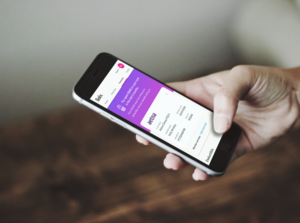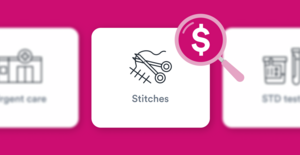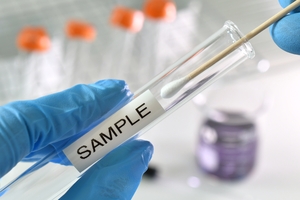TB Test near me
Own a clinic? Add your location.
Help patients book appointments with you on Solv. It's free!
14 instant-book locations

Labcorp, Columbus
Labcorp



Quest Diagnostics
Quest Diagnostics



Quest Diagnostics
Quest Diagnostics

Quest Diagnostics
Quest Diagnostics





Quest Diagnostics
Quest Diagnostics

Med Save Urgent Care
Med Save Urgent Care

CVS MinuteClinic, CVS MinuteClinic
CVS MinuteClinic

CVS MinuteClinic, CVS MinuteClinic
CVS MinuteClinic
MedSave Clinic
MedSave Clinic
Walk In Urgent Care, Columbus - N. High Street
Walk In Urgent Care
Walk In Urgent Care, Columbus North
Walk In Urgent Care
Own a clinic? Add your location.
Help patients book appointments with you on Solv. It's free!
About TB Tests
A TB test checks to see whether you have ever been infected with TB. It cannot confirm whether your infection is active or latent but will determine if you have ever had this bacterial infection.
A TB test can be performed as a skin test or blood test. No special preparation is required for either test.
During the skin test, the TB test provider injects a small protein called PPD under the first layer of your skin. PPD comes from TB bacteria, and a reaction to PPD can indicate that you have had TB. After 48 to 72 hours, the TB test provider will have you return to the clinic so the injection site can be closely inspected to confirm or rule out a positive result.
During the blood test, the TB test provider uses a tiny needle to draw a small sample of blood from your arm. Your sample is then sent to a lab to analyze and evaluate whether you have had TB.
A TB test is usually performed when you are experiencing symptoms of TB. Symptoms of TB include fever, chest pain, fatigue, night sweats, unexplained weight loss, cough that lasts at least three weeks, and coughing up blood.
A TB test may also be ordered if you are considered to be at high risk for TB. Risk factors for TB include having a compromised immune system, having been exposed to others with TB, or having traveled to a country where TB is widespread. In addition, some employers require employees to be regularly screened for TB, including healthcare facilities, correctional facilities, and those who work or volunteer at homeless shelters.
If your results are positive, your doctor may order additional testing to confirm or rule out TB because a TB test does not show whether you have an active infection. TB can often be successfully treated with antibiotics, which are typically taken for six to nine months to fully resolve a TB infection. Your doctor can discuss all your available treatment options during your appointment.
TB Test FAQs
What does a positive TB test look like?
When you take the TB skin test, a prominent bump will show up on your arm at the injection site if you have had a TB infection. This bump may appear red and swollen and indicates you likely have TB bacteria in your body. During your appointment, your doctor or the TB test provider will measure and examine the bump to confirm whether you are positive for TB.
Where can I get a TB test?
TB tests are available from many healthcare providers, including primary care physicians, hospitals, walk-in clinics and laboratories, pharmacies, and urgent care clinics. Your doctor may refer you to a TB test provider if you are exhibiting symptoms of an active TB infection. Solv can also help you locate top-rated TB test providers in your area.
What is a TB test?
A TB test is a screening that confirms whether you have had tuberculosis. There are two types of TB tests: a skin test and a blood test. The skin test involves injecting your skin with a protein called PPD that comes from TB bacteria to see whether your body reacts to the substance. The blood test involves drawing a small blood sample from your arm, which is then sent to the lab to confirm the presence of TB bacteria.
How long is a TB test good for?
A TB test is typically repeated every four years, regardless of whether you test positive or negative. Those who test positive may be required to also have a chest X-ray prior to getting a TB test every four years . Your employer or doctor may recommend that you have a TB test more or less frequently than every four years based on specific work policies or your symptoms and health condition.
How much does a TB test cost?
The cost of a TB test is determined by factors including the type of TB test, provider rates, geographical location, and whether this test is covered by your health insurance plan. Contact each TB test provider directly to learn more about pricing and rates, or contact your health insurance provider to learn more about your benefits and coverage related to TB testing.
Does insurance cover TB testing?
TB testing is covered by many health insurance plans, especially if your doctor considers this test to be medically necessary based on your symptoms or level of exposure to people with TB. Some employers may also cover the cost of TB testing if it is required by your workplace. Contact your health insurance provider directly to learn more about your benefits and coverage for TB tests.
How often do you need a TB test?
Employers that require employees to be tested for TB usually recommend being screened every four years. Your doctor may recommend regular TB screening if you spend time with someone who has TB or have spent time in a region such as Africa or Russia, where TB is highly common and widespread. Ask your employer or doctor to confirm how often you should have a TB test based on these factors.
How long does a TB test take?
The TB blood test usually takes less than five minutes, as it involves drawing a small sample of blood from your arm. The TB skin test also takes a few minutes but requires you to return to the clinic after 48 to 72 hours so the injection site can be examined for a reaction . The TB test provider can give you a more precise time estimate when you call to book your appointment.
How can I book a TB test through Solv?
Booking a TB test is easy and fast with Solv. Go to the Solv Home page, type “TB test” into the search field, then select your location from the dropdown menu to the right. Solv will display a list of top-rated TB test providers in your area that offer this service. Select the TB test provider of your choice, then use the contact information shown to book an appointment.
Can I do at-home TB testing?
Currently, there are no TB test kits available that allow you to test for TB at home. However, some healthcare providers may visit your home to administer a TB test, though this service may only be available to those who are physically unable to leave their homes. Ask your doctor for more information about the possibility of at-home TB testing if you or a loved one is unable to leave your home to do this test.

Updated on Jan 25, 2025
Solv has strict sourcing guidelines and relies on peer-reviewed studies, academic research institutions, and medical associations. We avoid using tertiary references.
Related searches
Everyday Healthcare, Simplified
Expert advice to help you live your best life






